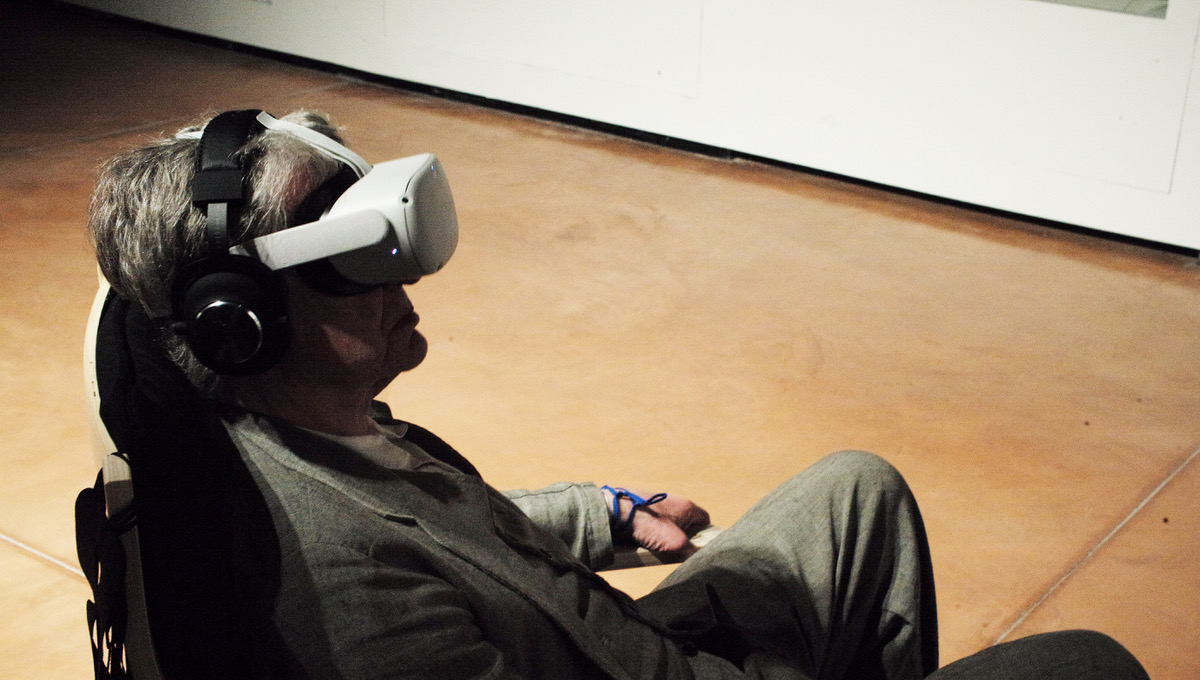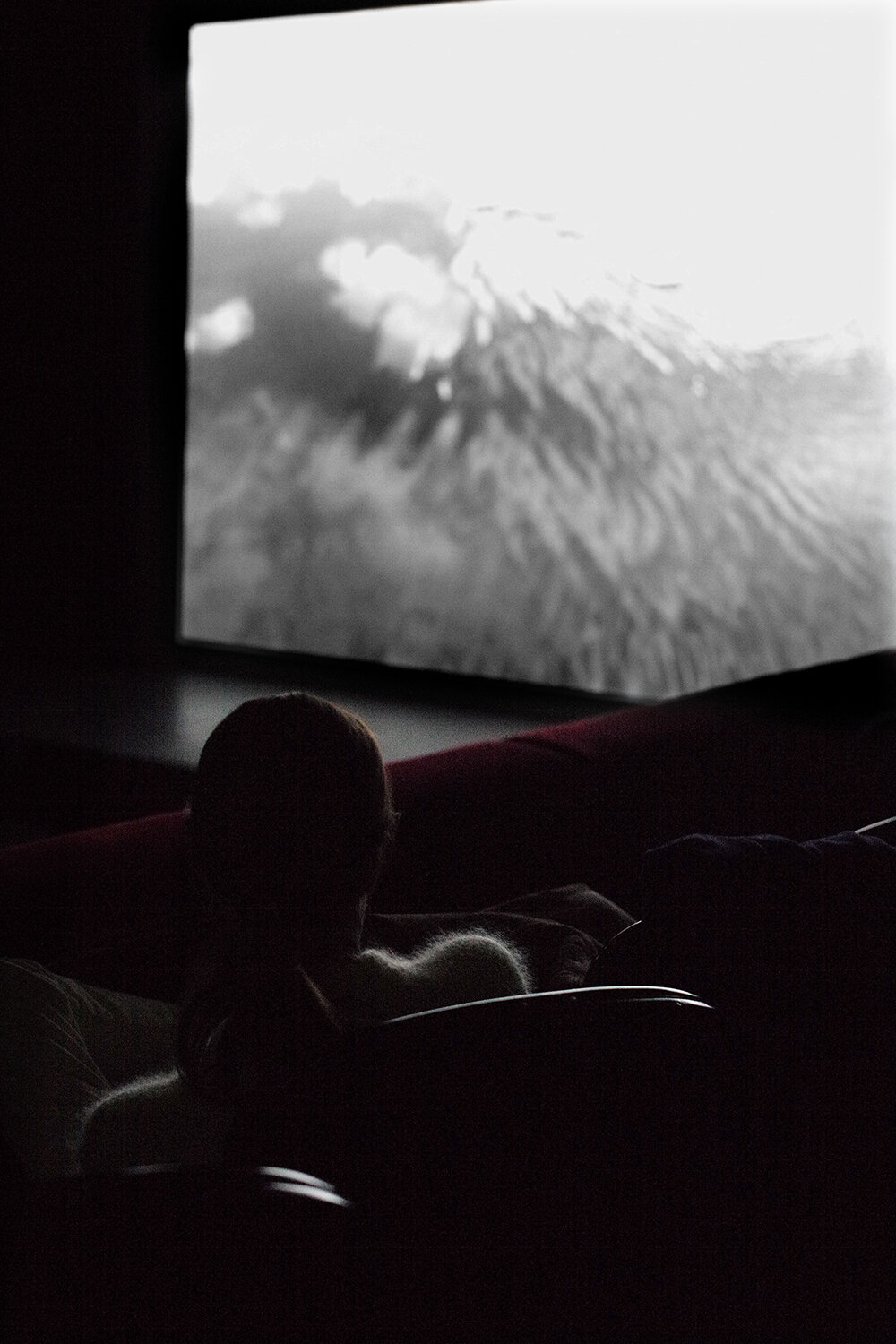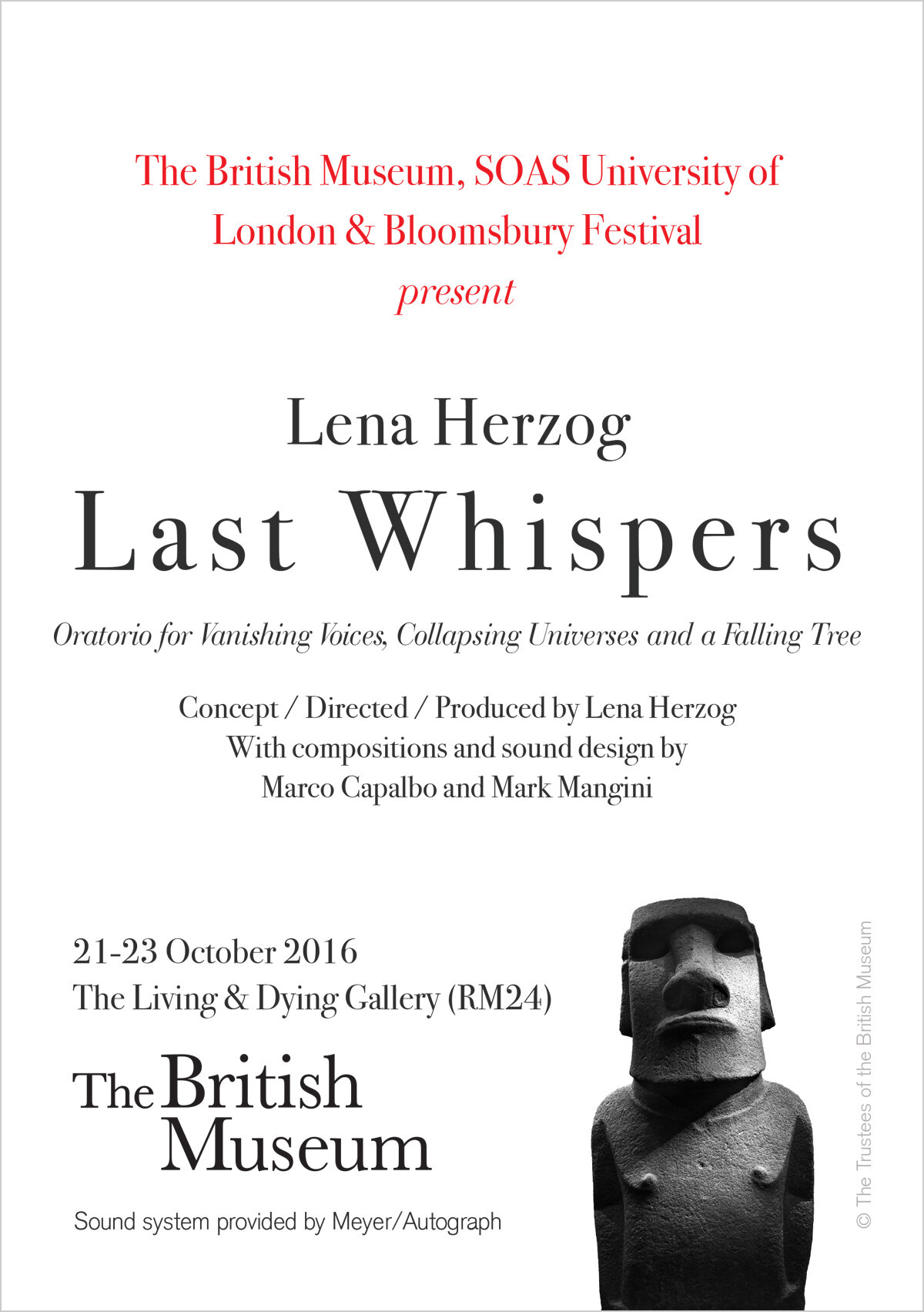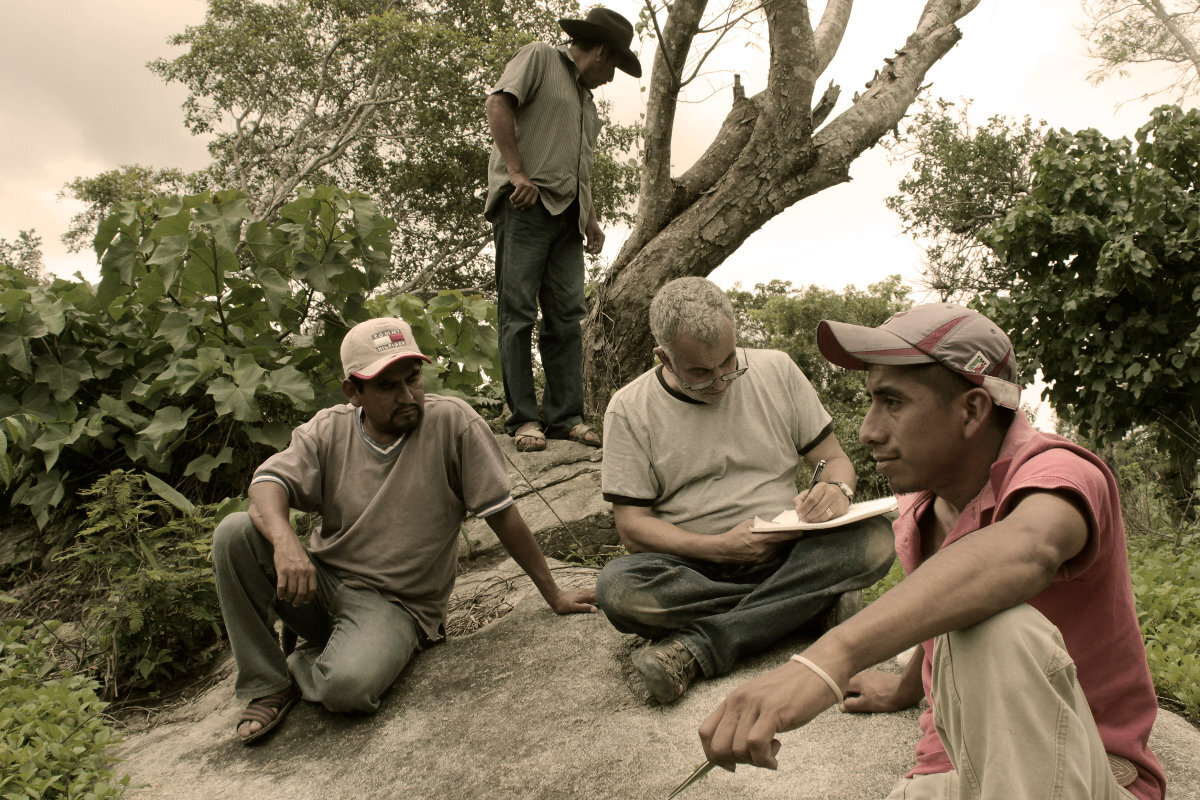LANGUAGES
Below are the languages featured in Last Whispers, which were donated by last speakers, linguists, language activists and language archives. This collection of recordings was made in collaboration with the Endangered Languages Documentation Programme and the SOAS World Languages Institute, SOAS, University of London.
Ahom
India
Pacific and Regional Archive for Digital Sources in Endangered Cultures (PARADISEC)
Collector: Stephen Morey
Speaker: Tileshwar Mohan
Ainu
Japan
Endangered Languages Archive at SOAS University of London (ELAR)
Collectors: Anna Bugaeva and Hiroshi Nakagawa
Speaker: Mrs. Kimi Kimura
Ayoreo
Paraguay
Living Tongues Institute for Endangered Languages
Collector: Anna Luisa Daigneault
Speakers: Iyagai Catalino Picanerai, Pehe Picanerai
Bathari
Oman
Endangered Languages Archive at SOAS University of London (ELAR)
Collector: Miranda Morris
Speakers:
Maḥmūd Mšaʕfi Musallim Al Mashrami Al Baṭḥari, Sowma Zifena Musallim Al Mashrami Al Baṭḥari, Faraḥ Mšaʕfi Musallim Al Mashrami Al Baṭḥari, ʕᾹmir Māgid Suleyyim Al Mḥabši Al Baṭḥari, Nasra Salim Shemlān Al Mḥabši Al Baṭḥari, Salim Muḥammad Saqr Al Mashrami Al Baṭḥari, Rubeyyaʕ Adahaba Suleyyim al-Mamṭari Al Baṭḥari, Bakhayyit Saʕad Saḳr Al Mashrami Al Baṭḥari, Lḥabāb Hamūd Salim Al Mashrami Al Baṭḥari, Saʕad Qāsim Aṭali Al Mamṭari Al Baṭḥari, Salīma Saqr Laġafēli Al Mašarmi Al Baṭḥari
Central Balsas Nahuatl
Mexico
Collector: Jonathan D. Amith
Speakers: Clemente Baltazar, Eugenio Castro, Valentina Reyes Damian, Silvestre Pantaleón, Mundo Ramírez
Chamacoco (Ishir Ibitoso)
Paraguay
Living Tongues Institute for Endangered Languages
Collector: Anna Luisa Daigneault
Speakers: Baaso, Crispulo Martinez (Kafotei), Agna Peralta
Dalabon
Australia
Endangered Languages Archive at SOAS University of London (ELAR)
Collector: Maïa Ponsonnet
Speaker: Maggie Tukumba
Duoxu
China
Endangered Languages Archive at SOAS University of London (ELAR)
Collectors: Katia Chirkova, Zhengkang Han, Dehe Wang, Xiaowen Yuan
Speakers: Wenming Ma, Decai Wu, Denglian Wu, Rongfu Wu, Zhengmei Wu
Enxlet Norte
Paraguay
Living Tongues Institute for Endangered Languages
Collector: Anna Luisa Daigneault
Speaker: Silvestre Martinez
Great Andamanese
India
Endangered Languages Archive at SOAS University of London (ELAR)
Collector: Anvita Abbi
Speakers: Boa Sr., Buro, Ilfe, Pao Buddha
Ikaan
Nigeria
Endangered Languages Archive at SOAS University of London (ELAR)
Collector: Sophie Salffner
Speakers: Lawrence Abiola, Comfort Adedeji, Dignes Adedeji, Hannah Adedeji, Richard Bamidele Adedeji, Fred Adekanye, Lydia Adekanye, William Adekanye, Mayowa Adekunbi, Ruth Adeoba, Juliana Adeyanju, Maybelle Adeyanju, Omojola Baale, Dorcas Babalola, Simeon Olaitan Balobun, Dorcas Balogun, Asya Gefter, Thomas Obadau, Janet Obanobi, Adesonmi Obaude, Bola Ruth Oloyo
Ingrian
Russia
Endangered Languages Archive at SOAS University of London (ELAR) &
Karelian Institute of Language, Literature and History of the Russian Academy of Sciences
Collectors: Fedor Rozhanskiy, Elena Markus, Enn Ernits, Eino Kiuru, Elina Kylmäsuu, Terttu Koski
Speakers: Ekaterina Andreyevna Aleksandrova, Zinaida Antonovna Dmitriyeva, Aleksandra Mikhaylovna Efimov, Konstantin Efimov, Praskovya Milhaylovna Fedorova, Fekla Mikhaylovna Gerasimova, Evdokiya Isayeva, Evgokiya Lukinichna Ivanova, Tatyana Ignatyevna Ivanova, Akulina Mikhaylovna Kirilova, Nikolay Mikhaylov, Mariya Elizarovna Nikitina, Feodosiya Nikitichna Petrova, Evdokiya Filippovna Rodionova, Galina Ivanovna Samsonova, Anna Vasilyevna Stepanova, Anna Ivanovna Trofimova, Evgeniya Emelyanovna Vasilyeva, Matrena Dmitriyevna Vasilyeva, Mariya Volosanova, Anna Zolotova
Ixcatec
Mexico
Endangered Languages Archive at SOAS University of London (ELAR)
Collectors: Denis Costaouec & Michael Swanton
Depositors: Denis Costaouec & Michael Swanton
Speakers: Juliana Salazar Bautista, Lirio Salazar Gutiérrez, María Patrocina Salazar Gutiérrez, Pedro Salazar Gutiérrez, Cipriano Ramírez Guzmán, Rufina Álvarez Robles
Ju|’hoan
Namibia
Endangered Languages Archive at SOAS University of London (ELAR)
Collector: Megan Biesele
Speakers:|Ai!ae, ǁ’Angsa |’Angn!ao, |Asa ǁXamte, !Kaia G|aeku, Kaqece ǁ’Ao, |Kunta, N!aq’e, Nǁao Kxao, Sagǁai
Kotiria (Wanano)
Brazil and Colombia
Endangered Languages Archive at SOAS University of London (ELAR) & Kotiria Linguistic and Cultural Archive
Collector: Kristine Stenzel
Speakers: Emilia Trindade Cabral, Helena Cabral, Mateus Trindade Cabral, Ricardo Trindade Cabral, Emilia Melo
Koyukon
USA
Alaska Native Language Archive
Speaker: Henry Titus
Courtesy of Allen and Anne Titus
Laklãnõ Xokleng
Brazil
The Archive of the Indigenous Languages of Latin America (AILLA)
Collector: Greg Urban
Speakers: Vãjẽky Téy, Vãjẽky Paté, Dil tõ vo
Courtesy of: Nanblá Gakran
Light Warlpiri
Australia
The Language Archive, Max Planck Institute for Psycholinguistics, Nijmegen, The Netherlands
Collector: Carmel O’Shannessy
Speakers: the children of Lajamanu
Los Capomos Mayo
Mexico
The Archive of the Indigenous Languages of Latin America (AILLA)
Collector: Ray Freeze
Depositor: Yolanda Lastra
Courtesy of Joshua Freeze
Mani
Samu/Samou region of Sierra Leone/Guinea
Endangered Languages Archive at SOAS University of London (ELAR)
Collector: Tucker Childs
Speakers: Momo Kaka Bangoura, Amara Camara, Kaba Camara, Yaaye Camara, Mahawa Conté
Manx
UK Manx
UK
Culture Vannin
Collector: Brian Stowell
Speaker: Ned Maddrell
Mbya Guarani
Paraguay
Living Tongues Institute for Endangered Languages
Collector: Anna Luisa Daigneault
Nǁng
South Africa
Endangered Languages Archive at SOAS University of London (ELAR)
Collectors: Tom Güldemann, Martina Ernszt, Sven Siegmund & Alena Witzlack-Makarevich
Project: A Text Documentation of Nǀuu
Speakers: Hannie Koerant, Andries Olyn, ǀUna Rooi, Griet Seekoei
Nafsan (South Efate)
Vanuatu
Pacific and Regional Archive for Digital Sources in Endangered Cultures (PARADISEC)
Collector: Nick Thieberger
Speakers: Harris Takau and John Kalfau
Nivkh
Russia
Sound Materials of the Nivkh Language
Collector: Hidetoshi Shiraishi (Sapporo Gakuin University)
Speakers: Konstantin Iakovlevich Agniun, Valentina Fedorovna Akilyak-Ivanova, Vera Eremeevna Khejn, Olga Anatol’evna Nyavan, Natalia Demianovna Vorbon
Olekha
Bhutan
Endangered Languages Archive at SOAS University of London (ELAR)
Collector: Gwendolyn Hyslop
Speakers: Chey Go Chelong, Kuenga, Nakari, Singye
Ongota
Ethiopia
Endangered Languages Archive at SOAS University of London (ELAR)
Collector: Graziano Savà
Speakers: Maale Goda, Gombo Karo, Dula K’awla, Geeda K’awla, Guayo Kurayo, Erre Sagane, Gename Wa’do
Paunaka
Bolivia
Endangered Languages Archive at SOAS University of London (ELAR)
Collectors: Swintha Danielsen, Lena Terhart, Federico Villalta
Speakers: María Cuasase, Pedro Pinto, Juana Supepí, Miguel Supepí
Pite Saami
Sweden
Endangered Languages Archive at SOAS University of London (ELAR)
Collector: Joshua Wilbur
Speakers: Anders-Erling Fjällås, Elsy Rankvist, Henning Rankvist, Tage Rankvist, Dagny Skaile, Per-Allan Steggo
Qaqet
Papua New Guinea
Endangered Languages Archive at SOAS University of London (ELAR) and Language Archive Cologne at the University of Cologne
Collector: Birgit Hellwig
Speakers: Paul Alin, Rudolf Arum, David Landi, Joyce Laniat, Henry Lingisaqa, Francis Murum, Lucy Nguingi, Justin Samurl, Dorothy Singan, Marcela Tangil
Sadu
China
Endangered Languages Archive at SOAS University of London (ELAR)
Collectors: Xianming Xu & Bibo Bai
Speakers: Lanzhen Li, Fenqin Li
Selk’nam (Ona)
Argentina
Selk’nam (Ona) Chants of Tierra del Fuego, Argentina, FW04176
Collector: Anne Chapman
Speaker: Lola Kiepja
Courtesy of Smithsonian Folkways Recordings (p) (c) 1972, used by permission.
Selkup
Russia
Laboratory for Computational Lexicography, Research Computing Center, Lomonosov Moscow State University
Collectors: Olga Kazakevich & Leonid Zakharov
Speaker: Rodion Sergeevich Kubolev
Sumtu (Sone Tu)
Myanmar
Endangered Languages Archive at SOAS University of London (ELAR)
Collector: Mai Ni Ni Aung
Speakers: U Lo Htaung, U Hla Sein, U Bo Thar, U Ni Tun
Surel
Nepal
Endangered Languages Archive at SOAS University of London (ELAR)
Collector: Dörte Borchers
Speakers: Junkimaya Surel, Tikamaya Surel, Tirtha Bahadur Surel
Tehuelche
Argentina
The Archive of the Indigenous Languages of Latin America (AILLA)
Collector: Jorge Suárez
Depositor: Yolanda Lastra
Speakers: Andrés Carminatti, Carmen Carminatti, Margarita Pocón de Manco, Ana Montenegro de Yebes
Trung (Dulong)
China
Endangered Languages Archive at SOAS University of London (ELAR)
Collector: Ross Perlin
Speakers: Mon Jisong, Pung Svr, Wang Jici
Warlpiri
Australia
Endangered Languages Archive at SOAS University of London (ELAR)
Collector: Carmel O’Shannessy
Speakers: Teddy Morrison Jupurrurla and the children of Lajamanu
Yanesha
Peru
Living Tongues Institute for Endangered Languages
Collector: Anna Luisa Daigneault
Speakers: Christina Bautista, Justina Quinchuya
Yauyos Quechua
Peru
The Archive of the Indigenous Languages of Latin America (AILLA)
Collector: Aviva Shimelman
Speakers: Victorina Aguado, Octavia Arco, Bautista Cárdenas, Macedonia Centeno, Delfina Chullunkuy, Soylita Chullunkuy, Ninfa Flores, Cecilia Guerra, Juana Huari, Soylita Huari, Saturnina M., Esther Madueño, Margarita Madueño, Lucia Pariunám Martínez, Santa Ellu Martínez, Genoveva Rodríguez, Lucía Rodríguez,, Leona Wamán, Urbana Yauri
Yoloxóchitl Mixtec
Mexico
Endangered Languages Archive at SOAS University of London (ELAR)
Collector: Jonathan D. Amith
Speakers: Constantino Teodoro Bautista, Soledad García Bautista, Estela Santiago Castillo, Alberto Prisciliano Federico, Mario Salazar Felipe, Martín Salazar Felipe, Rey Castillo García, Martín Severiano Germán, Marcelina Encarnacion Gertrudis, Maximiliano Francisco Gonzalez, Fernando Niño Leonardo, Alfonso García Reyes, Victorino Ramos Rómulo, Lamberto García Santiago, Zoila Guadalupe Sierra, Maximino Meza Teodoro, Santa Cruz Tiburcio





























































































































MUSIC / NYTIMES.COM
by Zachary Woolfe
Published October 11th, 2019
"… an unclassifiable work.
Ms. Herzog approaches this dismal subject in a decidedly poetic, almost abstract way, conveying the aura of all that’s being lost rather than haranguing.
That we don’t see the speakers and can’t know what’s being said is the point of this austere and poignant Babel. The musical landscape is sometimes gentle, sometimes aggressive, but it always keeps our attention on the rich, incomprehensible, often overlapping chorus of words.”
—Zachary Woolfe